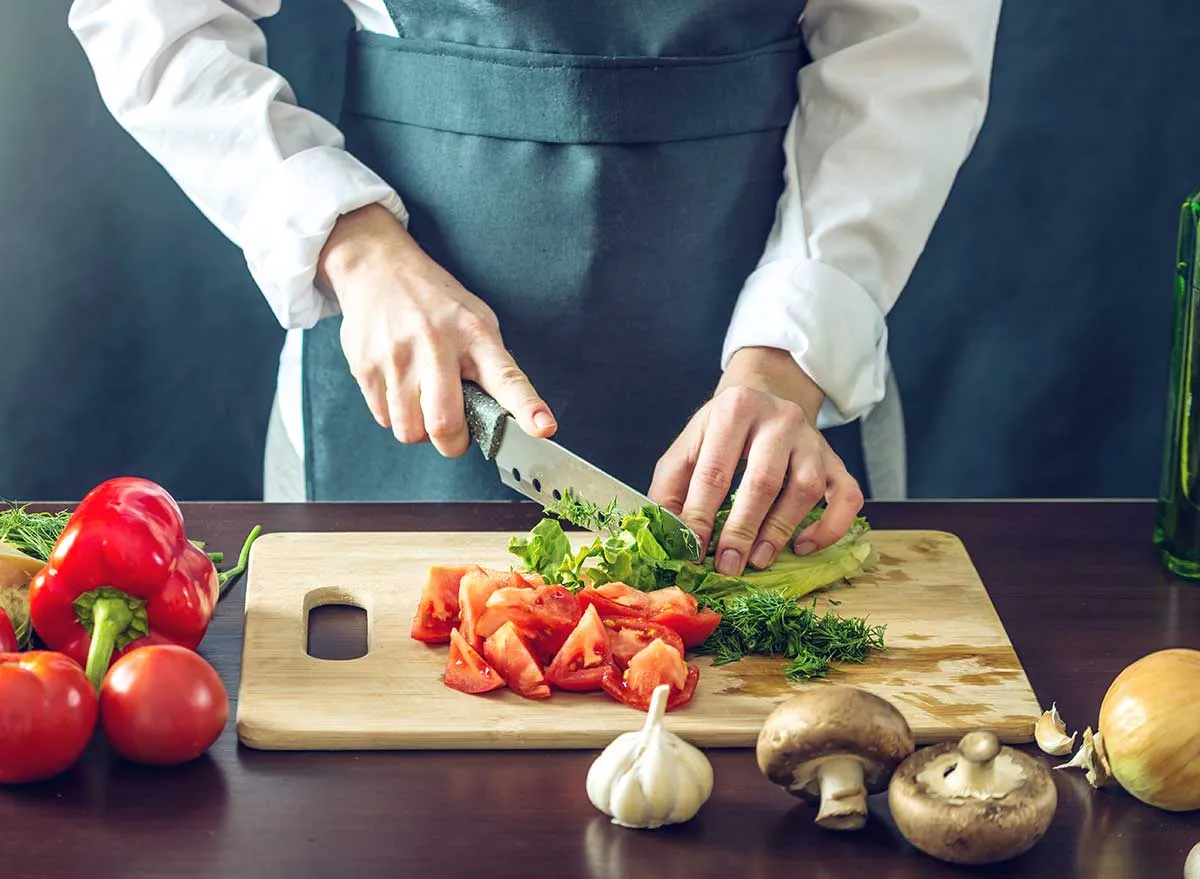Keeping a wooden cutting board clean is vital for any kitchen professional. Proper maintenance not only promotes hygiene but also prolongs the life of your board. In this guide, we will detail how to effectively clean your wooden cutting board with hydrogen peroxide, ensuring that it remains both sanitary and beautiful.
Throughout this article, we will explore essential tips and tricks for caring for wooden cutting boards, including additional cleaning methods and important **hygiene practices** to follow in your kitchen.
:max_bytes(150000):strip_icc()/prevent-cutting-board-slipping-1123-c9837c7f958745b792c2b115c7d7bccd.jpg)
The Importance of Routine Cleaning
Wooden cutting boards provide unique challenges when it comes to cleanliness. Unlike plastic boards, which are non-porous, wooden boards can absorb bacteria if not cleaned properly. This is where knowing how to clean wooden cutting board with hydrogen peroxide comes in handy. Hydrogen peroxide is a natural disinfectant that is effective in killing a range of bacteria. Understanding routine cleaning can help you maintain a safe cooking environment.
Why Hydrogen Peroxide?
Using hydrogen peroxide as a cleaning agent is beneficial for several reasons. For starters, it is an earth-friendly option that leaves no smell. It ensures effective cleaning of your cutting board, making it a go-to for professional chefs.
Steps to Clean Your Wooden Cutting Board with Hydrogen Peroxide
Here are the detailed steps on how to clean wooden cutting board with hydrogen peroxide:
- Gather Your Supplies: You will need hydrogen peroxide (3% concentration), a soft sponge or cloth, and optionally a scraping tool for deeper stains.
- Rinse the Board: Before applying hydrogen peroxide, rinse your wooden cutting board under warm water to remove any residues from food particles.
- Apply Hydrogen Peroxide: Pour a sufficient amount of hydrogen peroxide onto the surface of your cutting board. Ensure that the entire area is covered.
- Let it Sit: Allow the hydrogen peroxide to sit for around 5-10 minutes. This will disinfect the surface. For deeper stains, you might want to leave it on for a bit longer.
- Wipe Clean: Use a soft sponge or cloth to wipe the cutting board clean. You can also add a gentle scrub if necessary.
- Rinse Again: Rinse the cutting board under warm water to remove any traces of hydrogen peroxide.
- Dry Thoroughly: It is crucial to dry the board properly, as moisture accumulation can lead to warped wood and bacteria growth.
Additional Cleaning Tips
In addition to hydrogen peroxide, consider these other cleaning methods:
- Use a mixture of baking soda and vinegar for tough stains.
- For a natural antibacterial option, rub lemon juice across the surface before rinsing.
- To get rid of sticky residues, you can refer to remove sticky residues.
Maintaining Your Wooden Cutting Board
After youve cleaned your wooden cutting board, maintaining it is key to its longevity. Follow these tips:
- Avoid soaking your wooden cutting board in water.
- Regularly apply mineral oil to keep the wood hydrated.
- Store your cutting board in a dry place to prevent mold.
Recognizing When to Replace Your Cutting Board
Even with rigorous cleaning, there comes a point when a cutting board needs replacing, especially if it has deep cuts or grooves. You can learn more about the indicators of a cutting board needing replacement here.
Preventing Cross-Contamination
Cross-contamination can occur if raw meat juices are present on your cutting board. To reduce this risk, consider the following:
- Use separate boards for raw meat and ready-to-eat foods.
- Clean and sanitize the board immediately after use with food that poses a risk.
For detailed advice on ensuring food safety with cutting boards, visit prevent cross-contamination.

Frequently Asked Questions
- Can you use hydrogen peroxide on all types of cutting boards? Hydrogen peroxide is safe for wooden cutting boards but should be avoided on certain finishes. Always check your board's care instructions.
- How often should I clean my wooden cutting board? It is advisable to clean your wooden cutting board after every use, especially after cutting raw meats.
- Does hydrogen peroxide leave a smell? No, hydrogen peroxide typically does not leave a smell, making it a preferred option for many chefs.
As an Amazon Associate, I earn from qualifying purchases.


























